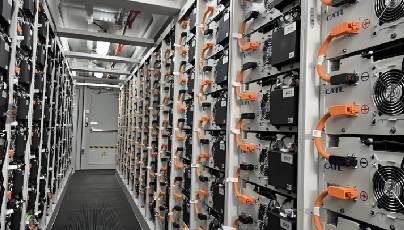
The battery in an energy storage power station is an important component for storing electrical energy, which requires regular maintenance and sometimes replacement. The maintenance and replacement of batteries in energy storage power stations is a complex and meticulous process that requires following a series of operational steps to ensure safety and ensure the normal operation of the power station. The following are the maintenance and replacement steps for batteries in energy storage power stations:
1、 Battery maintenance:
1. Regular inspection: Firstly, carefully inspect the outer shell of the energy storage battery to see if there are any deformations, cracks, or other phenomena. At the same time, check if the battery wiring is loose and if there is oxidation or corrosion at the wiring points. If any problems are found, they should be cleaned or replaced in a timely manner.
2. Data parameter check: To check the temperature, voltage, capacity and other parameters of the energy storage battery. Measure the voltage of each battery using a voltmeter to ensure voltage balance between the batteries. And use a capacity tester to test the capacity of the battery pack and check whether the discharge performance of the battery is normal. These parameters are key indicators for the operation of energy storage batteries and should be checked regularly. If the parameters exceed the specified range, the use should be stopped immediately and troubleshooting should be carried out.
3. Battery maintenance: Keep the energy storage battery well ventilated, dry, and clean, and avoid using it in damp environments. Regularly clean the surface of the battery, keep it clean, avoid the impact of dust and dirt on battery performance, prevent the battery from working under overload, and conduct regular charging and discharging cycles to ensure the normal working state of the battery.

2、 Battery replacement:
1. Preparation work: First, ensure that the energy storage station is shut down and the ground wire is connected, and turn off the battery charging and discharging switch to avoid current damage. Prepare the necessary tools for battery replacement, such as wrenches, electric screwdrivers, etc. At the same time, prepare an emergency power supply to cope with possible emergencies. Be prepared for the time and plan of battery replacement to ensure adequate preparation of backup battery packs.
2. Disassembling the battery: First, remove the connectors around the battery to be replaced, and then remove the screws at the bottom of the battery. Next, remove the positive and negative wires and communication wires respectively, and finally remove the battery.
3. Replace the battery: Install the new battery in the corresponding position, fix the screws, and connect the positive and negative wires and communication wires separately. Ensure secure installation and check if the battery connection is good. If replacing multiple batteries, it is necessary to replace them one by one to ensure that each battery is correctly fixed and connected. Also ensure that the replaced battery is compatible with the system.
4. Inspection and testing: After replacing the battery, reconnect the battery pack and conduct voltage, capacity, and other tests. Set the parameters of the energy storage station according to the battery model, observe whether the battery is stable, and eliminate potential faults. Ensure that the system operates normally after battery replacement.
5. Waste battery disposal: Properly dispose of waste batteries and recycle or dispose of them in accordance with environmental regulations.
It should be noted that during the process of battery maintenance and replacement, relevant safety operating procedures should be followed, and safety always comes first. Therefore, operators must wear anti-static gloves and clothing to ensure their safety. When disassembling and replacing batteries, the power supply to the battery pack should be cut off to avoid the risk of electric shock to the battery. In addition, the use of metal tools in contact with the battery pack should be strictly prohibited to prevent short circuits or other accidents. Meanwhile, it is recommended that professional personnel or technical teams carry out battery replacement and maintenance to ensure the correctness and effectiveness of the operation. If you are unsure how to operate, you should promptly consult professional personnel or manufacturers for guidance. The maintenance and replacement of batteries in energy storage power stations is a meticulous and important task to ensure the safe and stable operation of the power station.